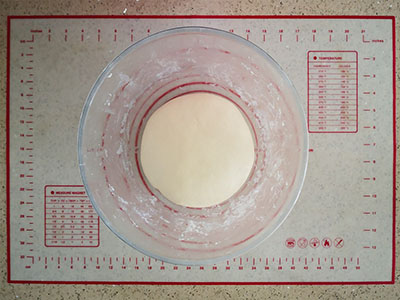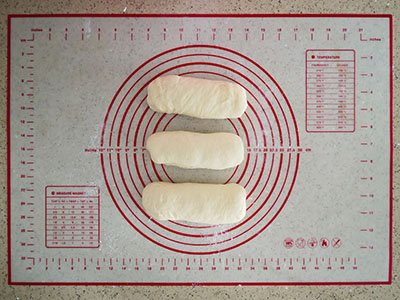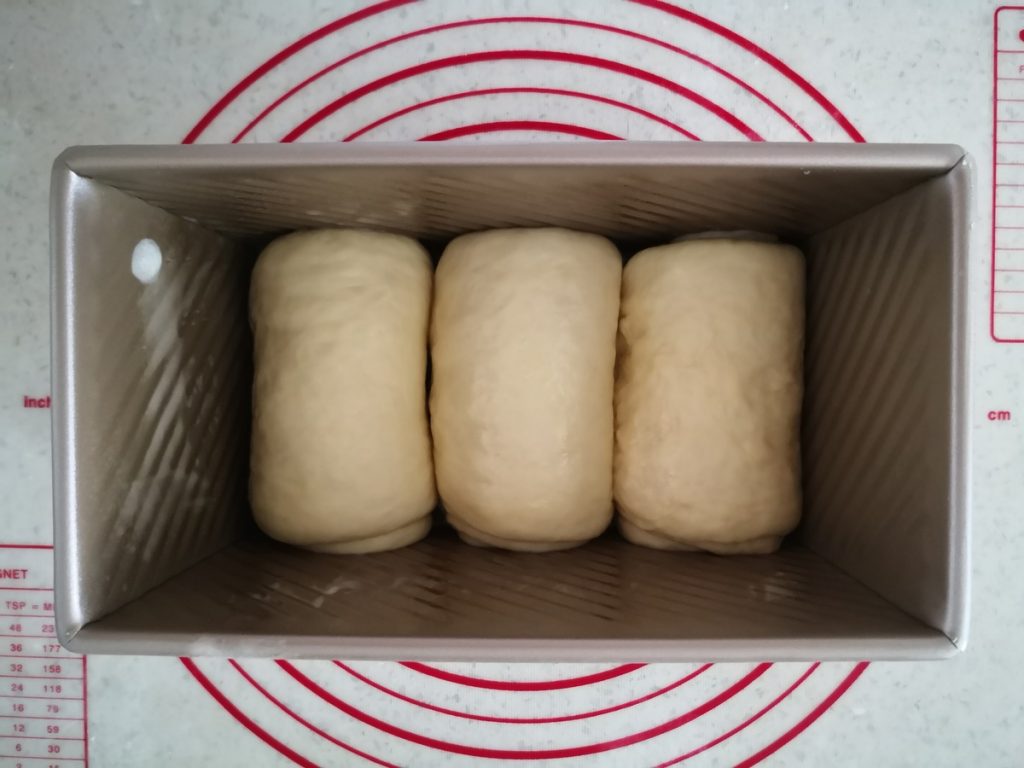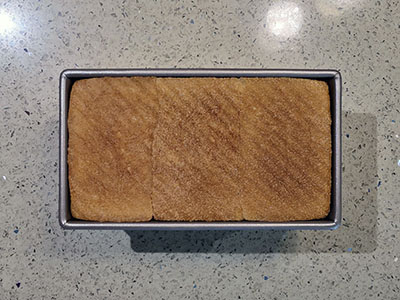My go to recipe for everyday sandwich bread - pullman style!

Sandwich loaf bread may be a staple in many homes, including mine. I make at least one every week and it’s definitely my kids favourite type of bread. Even before I started my sourdough journey, I used to bake it with commercial yeast or purchased one from the bakery or supermarket.
Once you make this homemade version of sandwich loaf, I will guarantee you will not go back to store bought ones.
This soft white bread with a slightly tangy taste is perfect for making sandwiches. It is so easy to slice and place it in a toaster for a toasted bread. You can even pair it with your favourite toppings like tuna, eggs, peanut butter or Nutella. Hmmm, just typing out grilled cheese sandwiches makes my mouth water. It’s also a perfect size of bread to pack into lunch boxes for school or work.
Best of all, as it is homemade, there are no additives or preservatives unlike store bought ones.
What do you need?
Listed below are the baking tools and supplies that you will need to prepare in advance.
- Active Sourdough Starter
- Digital Weighing Scale
- Digital Thermometer
- Mixing bowl
- Spatula
- Pullman Loaf Tin (20cm x 10cm x 10cm)
Overview of the list of ingredients:
Gives a basic understanding what each component does and gives you options on how to substitute each item to suit your dietary needs.
Levain
A levain is made by taking a portion of the starter and mixing it with fresh flour and water. For best results, best to use at peak.
Flour
Flour not only provides flavour and structure to the bread but also food for yeast to consume. This recipe uses 12% bread flour. If you don’t have bread flour, feel free to substitute it with all purpose flour. However, use reduce the amount of water added into the recipe when using all purpose flour as it won’t be able to absorb as much water.
Milk
Milk provides flavour and gives the bread it’s creamy colour and softens the crumb as well. A full fat milk will give a richer crumb compared to low fat milk. Substituting with plant-based milk may alter the taste and texture as it may be missing the fat content and sweetness from the milk. Just experiment and try it out!
Sugar
Sugar makes the bread sweet, softens and keeps the crumb moist and helps to give a caramelised color on the crust. Sugar is hygroscopic. This means that it is able to absorb moisture thereby keeping the crumb moist as long as they can. When substituting this with liquid sweeteners like honey and agave syrup, remember to reduce the water content by the same amount.
Butter
Butter is essential fats, as it serves as a lubricant for the crumb. It gives flavour and softens the crumb. Substitutes for butter is oil. As oil is a form of liquid, remember to be reduce the water content to compensate.
Eggs
Eggs are made of protein which supplements the gluten from the flour and binds the dough together. It not helps with rising but also makes it soft and fluffy.
Salt
Salt gives the bread taste, helps to tighten the gluten strands so that the bread can hold the carbon dioxide. In addition, it also acts as a control agent for the yeast, as it slows down the rate of fermentation, allowing us time to create strength in the dough as well.
How to make Sourdough Sandwich Loaf
Step 1: Prepare levain & wet mixture
To start off, you will need to have an active sourdough starter. Mix 70g starter with 70g water and 70g flour. Once the starter is at peak, use a mixing bowl to mix the 180g levain, 90g milk and 1 large egg together with a dough whisk.

Step 2: Mix the dough
Combine all the dry ingredients (260g high protein flour, 5g salt, 25g sugar) into a bowl before mixing into the wet mixture. Mix all the ingredients (except for the butter) and knead for 5-7 minutes until the dough comes together. Add the butter and continue kneading the dough for another 3-5 minutes until it is smooth and elastic. Place the dough in a mixing bowl or bulk fermentation container. Final dough temperature should be around 26-27°C.



Step 3: Bulk fermentation
Bulk fermentation starts when kneading ends. It is time for you to sit back and let the yeast do the work. Let the dough ferment at room temperature for about 2.5-3 hours or until the dough doubles in size.


Step 4: Preshape
Turn the dough onto a lightly floured surface with the top facing down. Gently flatten the dough to release the air bubbles. Divide the dough into 3. Shape each of the dough into small log shapes (like a sausage) and let it bench rest for 20 minutes.

Step 5: Final Shape
Roll out each the dough into a rectangle shape with the width slightly smaller than the loaf pan. Starting at the bottom, roll the dough into a log tucking the ends underneath. Grease the loaf before transferring the dough into the pullman loaf tin (20cm x 10cm x 10cm).

Step 6: Final Proofing
For final proofing, cover the dough and let it rise till it reaches 90% of the pan. Then, close the lid of the loaf pan.
Step 7: Baking
Preheat the oven at 180°C for 20 minutes. Once the oven thermometer reading shows 180°C, it is time to place the loaf pan in the oven to bake at 180°C for 35-40 minutes.
Step 8: Cooling and Storage


Please visit Sourdough White Sandwich Loaf for the full recipe.
